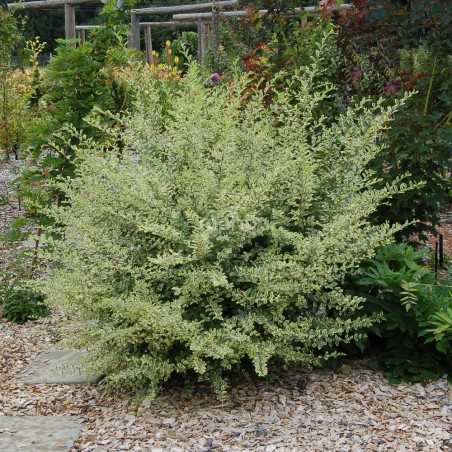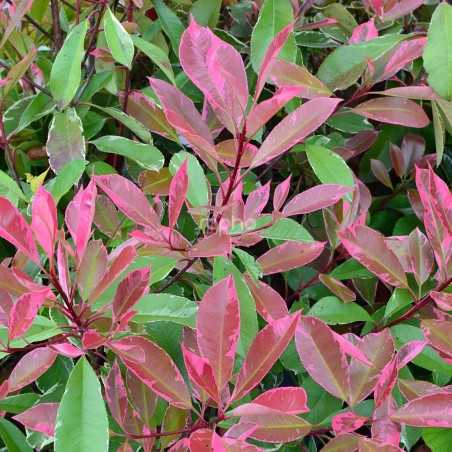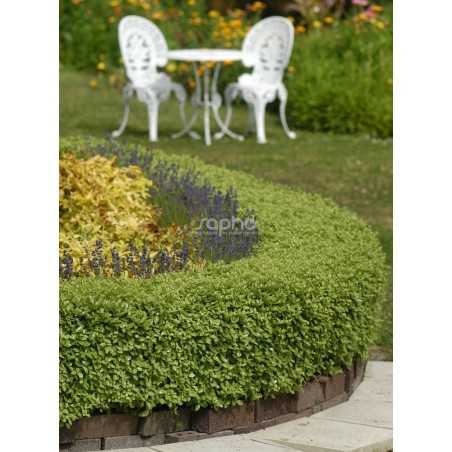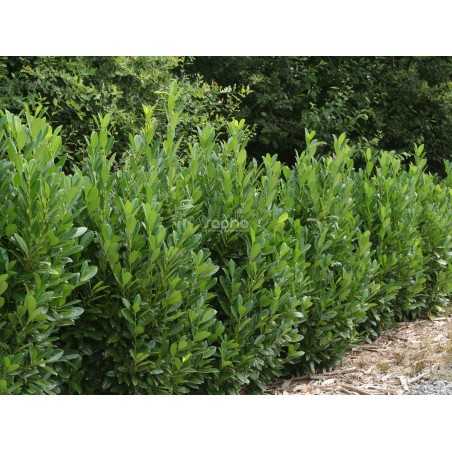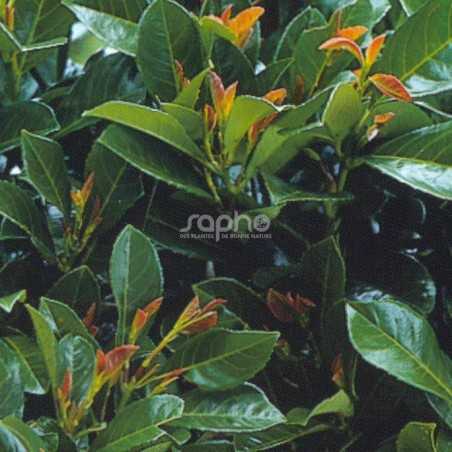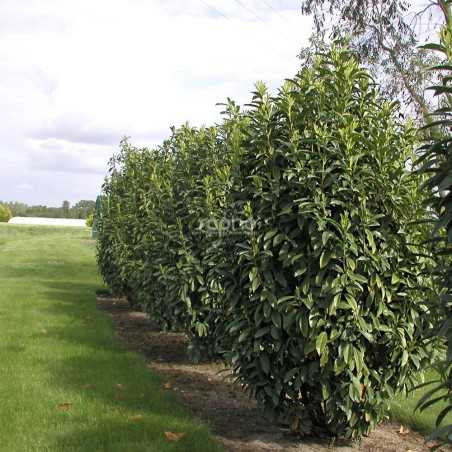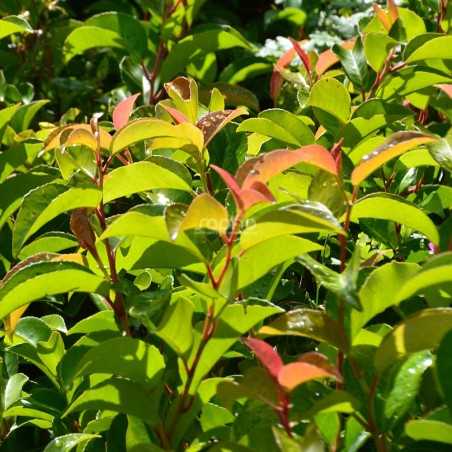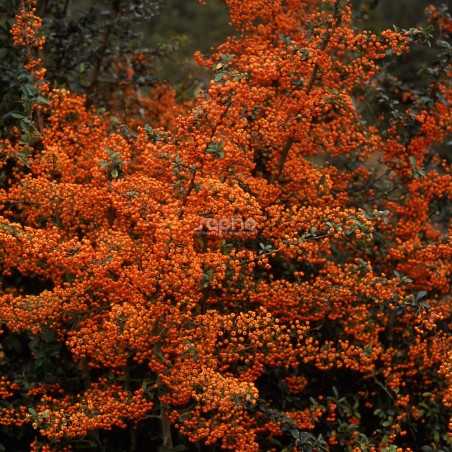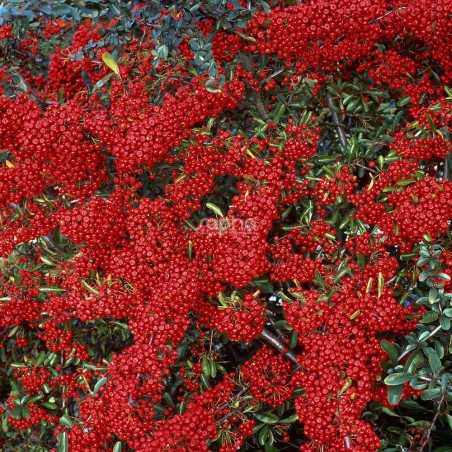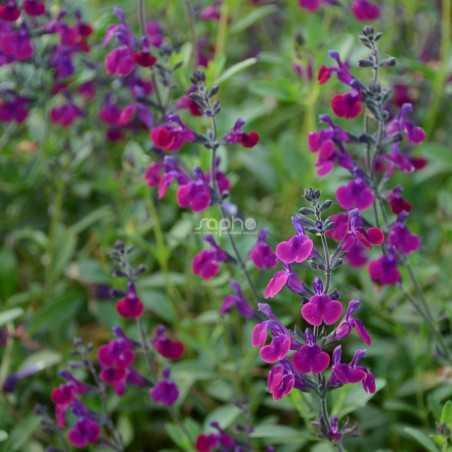Luminous shrub, MUSLI® is noticeable from a distance.MUSLI® was discovered and selected as a seedling of Ligustrum ibota in Switzerland.Leaves are opposite, evergreen to semi-evergreen and remarkable for their lasting variegation, highly resistant to the sun. The young shoots are light yellow, turning white with time. The foliage is more or less variegated, light grey-green with creamy white edges, sometimes so wide that they cover the entire width of the leaf.When young, the shrub is of bushy and spreading growth with arching branches. Then MUSLI® forms an even bush with a dense centre. It is of moderate growth.In early summer, the shrub will produce clusters of fragrant white tubular, nectar bearing flowers, turning into blue-black berries, which attract the birds.This shrub tolerates cutting back and is suitable in topiary, in a monospecific or a mixed hedge. Together with other shrubs or in a pot is is very remarkable by its particularoy bright foliage.Trophies: Bronze medal at PLANTARIUM 2011 (Boskoop - NETHERLANDS)
Filter By
Foliage
Position
Categories
Menu
Inspirations
Beautifully mixed colours and an upright and regular formIts variegated foliage brings colour throughout the year. Photinia Louise has also been selected for its vigorous, erect growth and its ample vegetation that's regular, compact and dense. Photinia Louise is a shrub with persistent leaves and changing colours. In spring and autumn the young shoots are bright red spotted with pink.The developing leaves become thick and green, spotted wih creamy white. Its flowers, in May, are quite discreet, forming creamy white umbels. Upkeep is easy as it needs little pruning other than that required by the garden. In a hedge, a mixed bed or as a solitary shrub, 2 to 3 m high, Photinia Louise will enliven a garden throughout the year.
Recommended for its low, naturally ball shaped growthThis cultivar originates from New Zealand.?Golf Ball? has a very round shape, not more than 1 m in dimension. It grows rapidly and stands out by its dense branches from the base upwards.Its evergreen foliage is light green.Discrete violet-brown flowers appear in Mai and June. The have a scent of honey but are of no decorative interest. 'Golf Ball' resists rather well to drought, and to temperatures of -5 to -10° C. It is excellent for the sea side because it accepts mist and wind.Recommended for small areas and low hedges, it is also suitable for pots and as topiary, like box.
A hardy selection with well-branched growth, for a maintenance-free hedge.This variety, coming from a Prunus laurocerasus 'Otto Luyken' seedling, was selected for its rapid growth and its well branched and upright habit, resembling a compact flame.It has few flowers in spring, and therefore only a little fruit afterwards.Rustic evergreen, particularly resistant to disease, not needing pruning, 'Greentorch' is an ideal variety for a monospecific hedge without worries.
Little springtime vulcanos for a low hedge.This variety of laurel with elegant branches naturally reaches a height of about 2 m and a spread of 1.50 m, all the while keeping its compact shape. It is of medium to slow growth.The coppery young shoots are decorative and contrast well with the shiny dark green foliage, which is evergreen.The creamy white flowers in May are followed by deep violet berries.ETNA® tolerates pruning and is recommended for the composition of moderate sized hedges (up to 0.80 m). Mixed with other shrubs, it brings an evergreen touch to beds. It can also be used in containers.Trophies: Gold medal at the Plantarium 1994. (Boskoop - NETHERLANDS)
For a naturally narrow and hardy hedge.This Prunus laurocerasus has been cultivated in Switzerland for its erect and narrow growth. It only needs light pruning.It reaches a height of 3,50 m and a width of 1.00 m when free growing.The foliage is shiny dark green, quite elongated and resists well to low temperatures.GENOLIA® does not thin out at the base and can stand the weight of snow thanks to its erect and strong branches.It has discrete flowers and the fruits are not very abundant.This variety is ideal for a narrow hedge.Trophies: Silver Medal at PLANTARIUM 2005 (Boskoop - NETHERLANDS)
Worth a try: a new evergreenThis new evergreen is an asset for the producer: its growth is vigorous and it forms very well. The young shoots offer a pretty bronze shimmer, later the foliage turns bright light green, which contrasts with the red petioles. In the autumn it turns bronze green.The slightly flared and drooping shape as well as the small and curled leaves give the shrub a light and natural silhouette.Very hardy for a Prunus azorica. Ideal for the revival of hedges!
Hardy Pyracantha of the SAPHYR® range with orange berries.This variety has all the characteristics of the SAPHYR® range.SAPHYR® Orange 'Cadange', fast growing, has a profusion of big bright orange berries from September onwards, lasting the best part of the winter.
Hardy Pyrancantha of the ; SAPHYR® range, with red berries.This variety has all the characteristics of the SAPHYR® range.SAPHYR® Rouge 'Cadange', medium fast growing.From September onwards until December, it bears an abundance of big, shiny, bright red berries finally turning orange at the end of the season.
Original violet from May to the first frosts
The flowers, more than 3 cm long, are of an intense, velvety violet, with a purplish blue light in its centre. The flowering starts abundantly in May and continues until the first frosts.VIOLETTE DE LOIRE® has an upright and well-branched shape.The foliage is small, dark green, semi-evergreen and naturally aromatic.An easy plant for the garden, in well draining soil, also tolerates being planted in a pot. The Salvia range on sale by SAPHO offer a beautiful palette of colours.
Trophies:
INNOVERT® silver medal 2013 Horticulture Category (Angers - FRANCE)

